East Asian Studies Final Exam
1/149
There's no tags or description
Looks like no tags are added yet.
Name | Mastery | Learn | Test | Matching | Spaced |
|---|
No study sessions yet.
150 Terms
According to Keown, which of the following practices did the Buddha try and abandon before finding "the middle way"? Check all that apply.
no | Meditation |
yes | Prayer |
yes | Self-mortification |
yes | Breath control |
yes | Mendicacy |
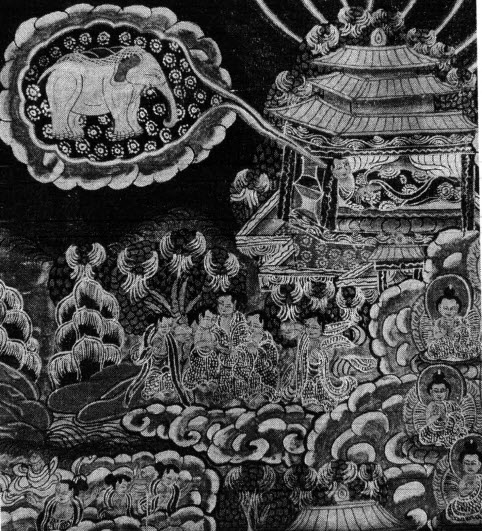
What does this image show?
The conception of the Buddha
Karma is a system of rewards and punishments meted out by the Buddha.
False
What is a bodhisattva?
An enlightened being who helps others attain enlightenment.
In Buddhist thought, in which sphere do humans fall (Keown)?
Sphere of Sense-desires
In which century did the Buddha live?
5th century BCE
Which of the following is NOT one of the "four signs," based on your reading by Keown?
Poverty
Which of the following are the "five elements" of Buddhism, according to Keown? (Check all five)
yes to all | moon |
water | |
earth | |
fire | |
space | |
wood | |
metal | |
sun | |
air |
Which of the following describes time in Buddhism and Christianity?
In Buddhism, time is cyclical. In Christianity, time is linear. |
Where is Theravada Buddhism practiced today?
Southeast Asia |
What was the "White Lotus Society" (based on your reading)?
a syncretic religious movement
The progression in the history of Buddhism from Theravada to Mahayana entailed
A new emphasis on the modalities of enlightenment | |
The bodhisattva replaced the arhat ideal | |
The problem of duality between samsara and nirvana emerged | |
yes (mult. choice) | All of the above |
Chinese Buddhism is unusual in that it did not develop monasteries.
False
According to Shaughnessy, "Graded revelation" in China was a process whereby ____________________.
Sutra were ranked
In Pure Land Buddhism, followers' main form of practice is _____________.
recitation
Tibetan Buddhism is a form of Theravada Buddhism.
False
Confucianists resented Buddhists in the Tang in part because _____________.
Buddhist temples were tax-exempt |
Which of the following did Buddhism bring to China, according to Shaughnessy? Check all that apply.
yes | meditation techniques |
yes | devotional and healing practices |
yes | ideas of the afterlife |
no | lay practitioners in place of clergy |
yes | savior figures |
yes | a central authorative text |
The big problem with translating Buddhist terms from Sanskrit to Chinese was _____________.
the concepts in Sanskrit did not exist in Chinese

What is this a picture of?
A Tang monk who went to India |
Which sutra has been the most influential in Japan?
The Lotus Sutra
How do people avail themselves of Amida's saving grace?
By invoking Amida's name.
Impermanence is a Buddhist idea.
True
Which of the following school of Buddhism is not found in Japan?
Shinto
Why has Nenbutsu (invocation of the Amida Buddha) been so popular?
It's practice allowed illiterate people to enter the Pure Land
Which of the following was influenced by Buddhism. (Check all that apply.)
yes to all | Painting |
Tea ceremony | |
Japanese Christianity | |
Food preparation |
Which of the following best describes the "Six Schools of Nara Buddhism"?
Early divisions of Buddhist study that later faded |
During the Nara Period, Buddhism ______________.
was largely confined to the aristocracy. |
Zen Buddhism holds that one attains enlightenment through
Meditation
Which of the following sects originated in Japan?
no | Tendai |
yes | Nichiren |
no | Zen |
yes | Pure Land |
Sokkuram is a Buddhist cultural treasure, according to Sohn.
True
Koryo's Chinul who established the Chogye Order advocated ____________
that Buddha is in one's heart and that one is in fact Buddha himself
Which of the following is only found in Korea?
The Defense of Fatherland Buddhism
When did Buddhism experience suppression?
Chosun dynasty
Silla believed that the king was _________?
Buddha
When did the largest sect of Buddhism start, according to Sohn?
Koryo period
Wonhyo was only interested in converting the royal family, according to Sohn.
False
One reason that Buddhism was welcomed by the government was that _______________.
It was a way to control the masses.
During the Chosŏn Dynasty, Buddhism remained the dominant center of Korean intellectual life.
False
In the Three Kingdoms Period, royalty saw Buddhism as ______________. (Check all that apply)
yes to all | an enemy of the state |
a source of revenue | |
offering supernatural protection | |
a potential force for internal unification |
Modern Chinese literature was influenced by Western ideas and literary forms.
True
The Book of Poetry is accompanied by _________________.
Commentaries
Which of the following fall into the category of "Philosophy" in classical Chinese literature (the "Four Treasuries")? Check all that apply.
yes to all | Geography |
Philosophical writers | |
Encyclopedias | |
Technical works | |
Dynastic histories | |
Private histories | |
Document collections | |
Art |
"Summons of the Soul," the song for a shamanistic religious ritual from the state of Chu, uses both threats and enticements to lure the soul back.
True
Traditional Chinese theater is basically operatic in style, they include all of the following elements EXCEPT for
wrestling
Who are the companions of the Monk Xuanzang? Check all that apply.
yes | An ox |
yes | A monk |
yes | A goat |
yes | A pig |
no | |
no | A poet |
According to your reading, traditional Chinese poetry varies in length.
True
Who is considered to be the greatest writer of lyrics (ci)?
A woman named Li Qingzhao |
The "Four Treasuries" classification of traditional learning comprised____________.
Classics, History, Philosophy, Literary Collections |
Modern Chinese literature is a continuation of traditional Chinese literature.
False
What was particularly notable about wood-block printing of literature in the Tokugawa?
Illustrations and text were mixed on the page
How many syllables does a waka poem have?
31
According to your reading, what is the difference in the tones of the Kojiki and the Nihon shoki?
The Kojiki is rougher and wilder
The norito in your reading tells us that _____________.
Izanami was burned giving birth to fire. |
In what period did haiku emerge?
Tokugawa
In the lecture, Professor Fessler recites a poem from the Man'yoshu. It has a theme that later disappeared in Japanese poetry. What is that theme?
Death
What is a major theme in the plays of Chikamatsu Monzaemon?
The conflict between ethical and personal demands
Your reading contains an example of a "norito" from ancient Japan. What best describes this "norito"?
A story about the early gods
Which of the following are forms of Japanese theatre? Check all that apply.
yes to all | Waka |
Bunraku | |
Kibyoshi | |
Noh | |
Kabuki |
What genre appears in the medieval period that did not appear in the Heian Period, according to your reading?
Military tales
In what century did novels written in hangul begin to appear?
17th
Hyangga are the earliest poems in Korean literature. How many of them have survived to the present day?
A couple dozen
What is "Idu"?
A type of script
Unlike in Japanese Literature, in tradtional Korean Literature poetry plays a very small role.
False
What is the general tone of hyangga?
somber
Which of the following were ways in which hangul was described in its early days, according to your reading? Check all that apply.
yes to all | half letters |
low-class writing | |
false letters | |
women writing |
What is Hyangchal?
An early phonetic script
The Koreans developed moveable type very early on. What prevented it from being widely used at first?
It was expensive to produce
The Samguk Sagi was written in hangul.
False
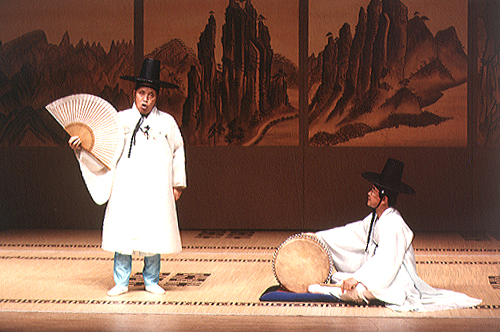
Based on your reading and the lecture, what type of literature is being recited in this picture?
Pansori
What is the linear structure of Chinese calligraphy?
Top to bottom; right to left
According to Shaughnessy, the two terms used most frequently in discussions of literati taste are _________________.
refined and vulgar
Based on your reading, which of the following types of calligraphy is best described as having lines of even thickness and well-defined spacing?
Seal script
Over the centuries, how did the iconography of Buddhist figures change in China, according to Shaughnessy (your reading)?
They became became plumper
According to your reading, the caves at Dunhuang are famous for their repository of what kind of art?
Buddhist
According to your reading, Beijing Opera (also known as Peking Opera), the most well-known form of Chinese drama, originated in which dynasty?
Qing
Traditional Chinese painting is most influenced by the ideas of which philosophical school?
Daoism
What was the preferred material for constructing buildings in pre-modern China?
Wood
Which of the following has been the primary writing tool in Chinese traditional culture?
The brush
According to your reading, how long was it after the Chinese learned to work jade that they mastered bronze casting?
2000 years
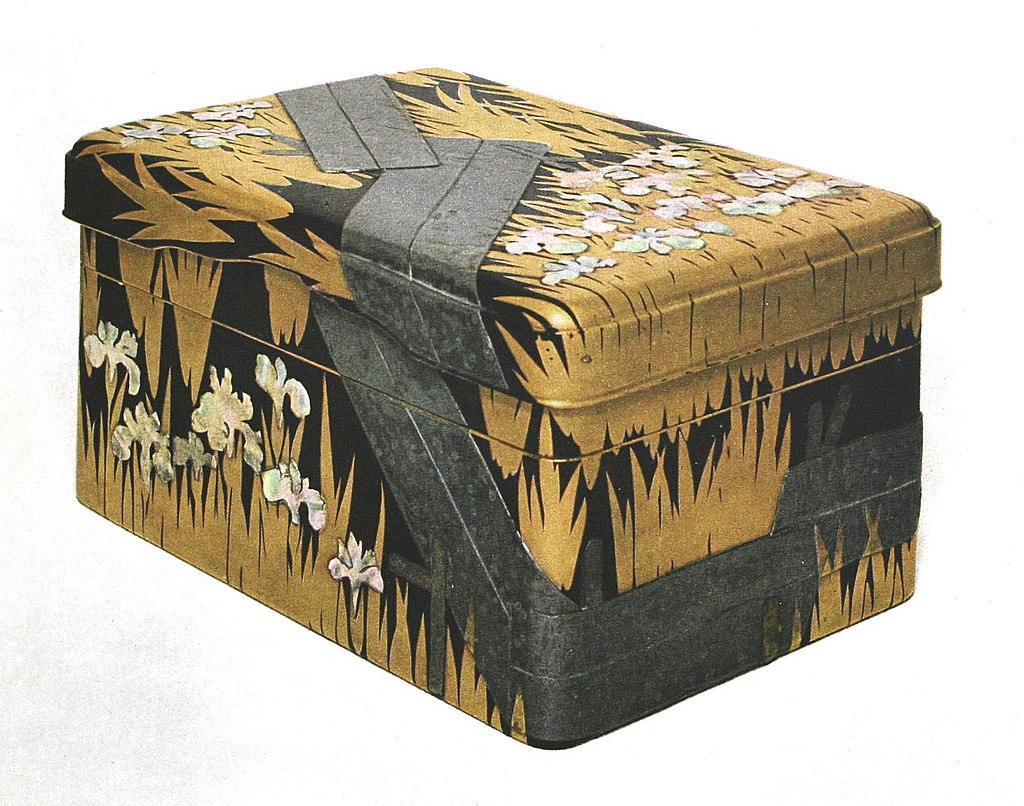
This Japanese box pictured here is made of ______________.
lacquer
Which of the following statements involving Chulmun and Mumun pottery (found in Korea) are TRUE?
yes | Mumun pottery may have indicated a shift towards a broader food strategy |
no | Mumun pottery reflects a more refined and elegant sensibility than Chulmun pottery, which was thought to be rougher and more functional |
yes | Chulmun pottery was similar to pottery found in China and Japan, whereas Mumun pottery was an original creation from the Korean peninsula |
no | Chulmun pottery and Mumun pottery had flat bases |
yes | Mumun pottery had a wider variety of shapes |
yes | Mumun pottery was painted in vivid colors |
yes | Mumun pottery had thicker walls |
no | Chulmun pottery was used for purely aesthetic purposes whereas Mumun pottery was more functional |
no | Mumun pottery was formed in a different manner than Chulmun pottery |

Most of the Horyuji temple complex, pictured below, was modeled on continental architecture. What one aspect was different?
The buildings were not arranged in a line |
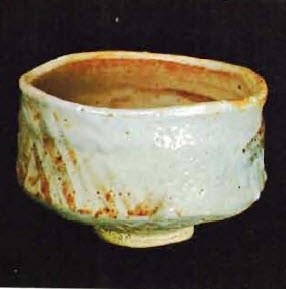
The teacup above is an example of wabi/sabi aesthetic, in particular its emphasis on...
Imperfection
The white color of Chosŏn porcelain best reflects Confucian ideas of _____.
Purity
Korean landscape painting moved toward greater _____________ over the centuries.
realism
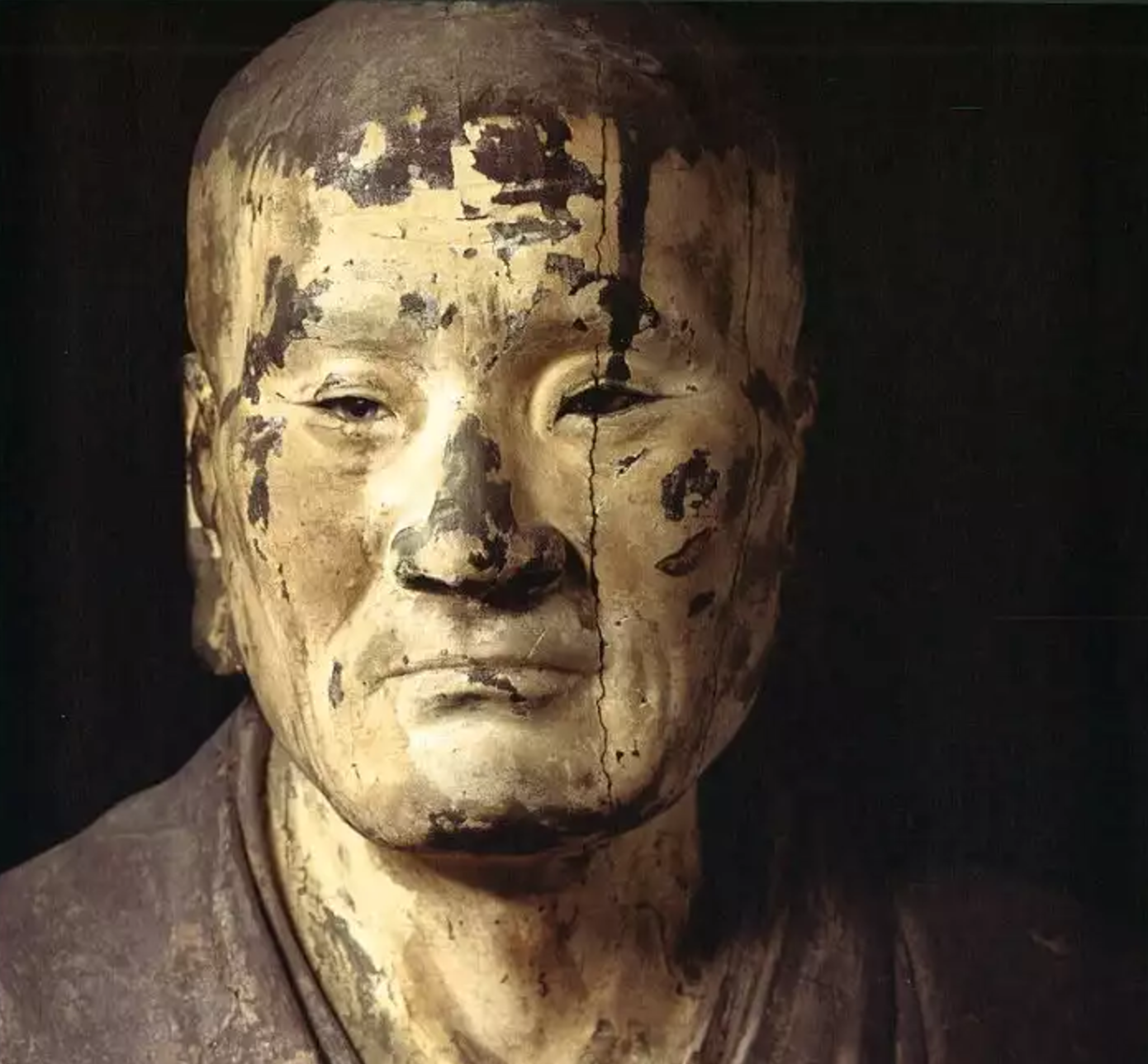
Art historians note that Unkei's (Japanese) portrait sculpture of Muchaku (pictured below) conveys what emotion through the eyes?
humour
The Kano school developed a novel style of painting that synthesized Chinese and indigenous painting styles, going on to become an almost official Japanese painting academy in the Heian period.
False
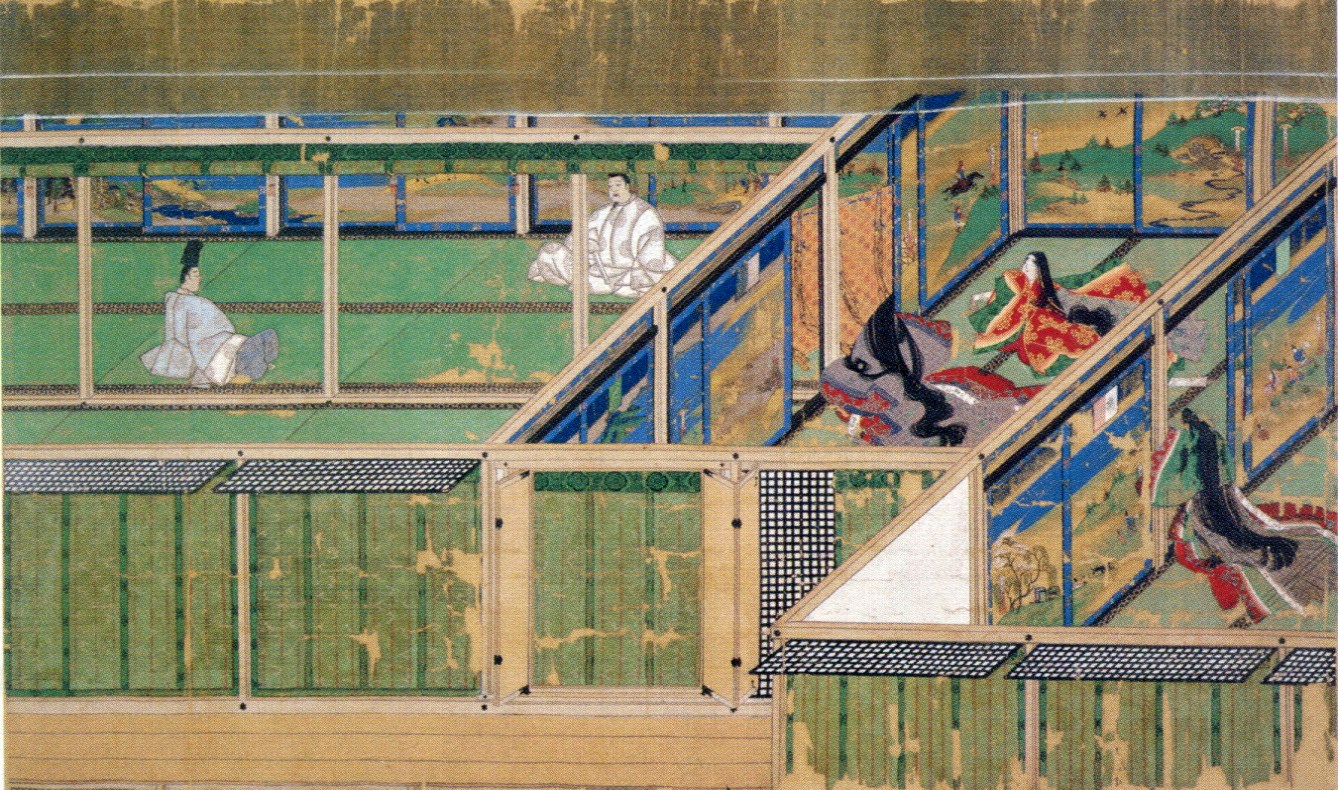
The painting here is an example of __________________ style.
blown roof |
One distinct form of Japanese art was the emakimono, a scroll that combined text with pictures to tell...(Select all that apply)
no | The Tale of Genji |
yes | Supernatural stories |
yes | Religious tales |
yes | War stories |
yes | Folktales |
What were the consequences of the Boxer Rebellion of 1900? Which of the following does NOT apply?
The Communists would found the People's Republic of China 12 years later
When was Christianity banned in China?
Early 18th century
Who was the most instrumental disseminator of Chinese tales and images throughout Europe during the seventeenth century?
Athanasius Kircher, director of the Jesuit museum in Rome |
What were the results of First Sino-Japanese War? Which of the following does NOT apply?
Manchuria was ceded to Japan
According to the section on "Maritime Trade and Relations with European Nations" in your reading, which of the following were the main European traders from the sixteenth to the eighteenth centuries? Check all that apply.
yes to all | Dutch |
German | |
Italian | |
Portugese | |
French | |
English | |
Spanish | |
Hungarian |
Which of the following is NOT one of the goals of Zheng He's voyages?
To expand the Chinese empire militarily |
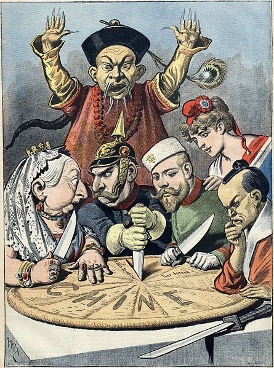
In this French cartoon from the end of the nineteenth century, which country is NOT represented among those cutting up "China" as a big piece of pie?
Spain
What were two important aspects of the Jesuit mission in China? Check all that apply.
yes to all | they used science to impress the upper-class Chinese |
the information they sent back to Europe about China | |
their role in the Opium War | |
they had the Chinese using Latin |
According to the Rites Controversy, what did the other Catholic orders (the non-Jesuit orders; the Franciscan and Domicans) object to and were eventually supported by the Pope? All of the following were objected to by the other Catholic orders, EXCEPT for
Accomodation of the rituals of Daoist priests (the Jesuits accepted the rituals of shamanistic Daoist priests) |
Where did the opium that the British shipped to China come from?
India